U2 360į Tour - Roadie Interview
* for GERMAN VERSION click here * During the shows in S„o Paulo, U2tour.de had the chance to speak to U2 360į roadie Arne de Knegt about stage building, his life on the road and memorable moments on the 360į Tour. U2tour.de: Arne we are very happy to do this interview with you today. How are you and how are things going in S„o Paulo? Arne: I am doing good and things seem to be good as well here in S„o Paulo. U2tour.de: You work for StageCo. When did you start working as a stage builder? Arne: I started working as a stage builder for StageCo in 2005. So the first show I ever did was the Vertigo tour in Germany, Gelsenkirchen. U2tour.de: What exactly is your job at the U2 360į Tour? What are your responsibilities? Arne: Here on the 360į Tour I am mainly responsible for the skins that service the cover over the stage, the green covers that absorb light and all the steel that is required to get that skin over the steel structure. Thatís the main job Iím doing here. 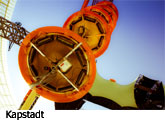 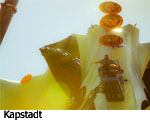 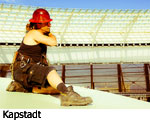
© Arne de Knegt Photography U2tour.de: There are three teams of the touring crew that put together the steel structure. You are in the Blue Steel group. How many members does each team have? Arne: It depends a little bit on where we are because in Europe we had StageCo truck drivers who transported a part of the stage. Obviously here in South America thatís been outsourced to a transport company. So currently here in South America we are 26 crew members per team. And itís also like 26 in North America. Outside Europe we use a 23 to 26 strong crew and inside Europe we are with 30 people. U2tour.de: You have worked on stadium tours along with huge bands such as The Rolling Stones, Muse or Bruce Springsteen so I think you are clearly an expert in terms of touring and staging. In your opinion, can outdoor stages get any bigger than the Claw in the near future or is this the biggest stages can ever get? Arne: No, stages can get bigger. The question is if this will happen but currently this stage actually uses a tower system to lift the Claw, as you call it, or the spaceship or whatever you call this structure. The Stage is lifted with four hydraulic motors, which seem to only use 40 percent of their capacity now. So theoretically you could still lift a structure twice this weight with these same motor systems. I freelance for this company so I donít know all the insights now, but obviously there is speculation that you can still build bigger stages with the same motors that StageCo now has. They have four motors per team times three steel crews, so that is twelve hydraulic motors, so theoretically you could still build three stages that could still be bigger, since these motors are designed to still lift heavier structures. U2tour.de: That sound very expensive. Can any other band than U2 pull that off? Arne: Thatís indeed the question that only time can tell. However, if you look at the last Vertigo stage, which was only half as big as the current 360 stage in terms of the amount of trucks needed to transport the steel. You know like this was in 2005, 2006. If you look at Muse or Coldplay, who toured last year as well: those structures were equally big or even slightly bigger than the one of the U2 Vertigo Tour in 2005. So even in 2005 you thought: "Can anything be bigger than U2?Ē And a few years down the road, what we think as maybe smaller bands, as Coldplay or Muse, have built bigger stages than U2 did in 2005. You know, in 2016 Muse might build a stage much bigger than U2 did now. 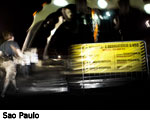 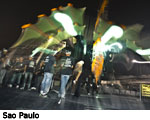 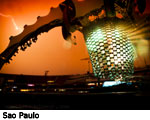
© Arne de Knegt Photography U2tour.de: Travelling the world as a roadie generally sounds like a lot of fun. Is it really like that or do you have to work so hard that you wish the tour to be over soon? Arne: Yeah I think both are correct. Mostly people, who hear about your job would say "Wow, thatís cool. I want a job like thatĒ and I must say, of course I am not complaining of being in S„o Paulo now and I was in Cape Town like five or six weeks ago. So there are certainly very positive sides to staging, however, obviously being a roadie means long hours, a lot of time pressure. So a lot of us actually see this purely as a job. And offdays are quite often really offdays where you just need to recover from the build. So I think there is a reality in both. U2tour.de: Which places have you been so far for U2 360į? Arne: Well it started in 2009. We were the team that started in Barcelona, the first gig and then we did the cities in Europe and after that we went to North America. U2tour.de: Were there any places you felt like "Letís get out of here soon, this doesnít seem to be cool hereĒ or something like that? I heard there had been some trouble in Moscow? Arne: Yeah, we were in Moscow. Well, it depends what trouble you mean. We got a virus or something. I would say 25 of the 30 people that were on the team got sick including myself. Obviously itís no fun taking down a stage, being on time pressure if you have to throw up five six seven times in the morning and equally often visit the bathroom. But stuff like that can happen and having said that, Moscow surely was really a highlight because when you tour Europe for a few years you know what London is like, you know Amsterdam, you know Paris. Itís all those places you see quite often. But going to Moscow or going to Istanbul is surely like a more adventurous or enjoyable destination. As for a change, you know. So a lot of us will look back at that as being one of the most difficult ones, everything that happened and then the virus most of us got. I still consider that to be, I cant say highlight, but certainly one of the most memorable moments, or venues. U2tour.de: It seems to be a very tight schedule even though one steel team always skips like two cities. Just an example: There have only been 12 days between Moscow and Istanbul. Is it possible to tear down the Claw in Moscow and ship it all the way to Istanbul in just 12 days or does it just sound like being that difficult? Arne: No, well, actually in Europe I also drive trucks, so I was part of that team that had to drive the stage from Hanover to Moscow, take it down in Moscow, drive it through all of Eastern Europe to Istanbul and then build it again and all that indeed within these 12 days, as you said. Of course in terms of enjoyment, that is the least enjoyable part of this tour where you know that even though you are sick that stage has to come down as soon as possible, because every minute you lose is a minute less of driving time. We drove single-handed to the the Russian-Latvian border, where we had doubledrivers waiting for us who would drive with us the next four days to Latvia, Poland and then all the way down to Turkey. Yeah obviously a schedule like that is not fun if you have to live purely by the tachograph and thatís surely putting a lot of stress on the team and on the wellbeing of the individual truckdrivers. 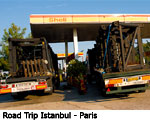 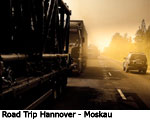 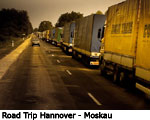
© Arne de Knegt Photography U2tour.de: Coming to the next topic: Do you actually like U2ís music? Arne: Personally, I am not too much of a music fan in general. I like to listen to the radio but if the radio is off I will not directly switch it on myself. However, of the bands that I toured with I must say that Iíd rather see U2 live than a few other bands that Iíve travelled with as well. U2tour.de: But you donít have to attend every show, do you? Arne: We donít have to attend at all. As I said, we are 26 and we have standby schedules on the production on showdays so that means every now and then you will have to do a standby show. I will in general see a show if it is possible. However if the show is late night and we have to work early morning on the next day I wonít always see it. But, for example, here in S„o Paulo we do three shows and I plan to see the one tomorrow night, because the day after we still have off and so you have time to recover and be fit for taking down the stage. U2tour.de: Have you had the possibility to meet any of the band members in the past few months? Arne: No, I mean we will have dinner in the same catering, like backstage, in the tour catering and you know you see them there but thatís still a different reality to you approaching them or having a conversation with them. U2tour.de: Coming back to the construction again. The whole construction is set to offer audiences a panoramic view of the band. Why is it that the bandís performance is rather a static one, most of the times they only play in one direction, they only play into the front actually. Are there any technical issues which require the band to play into the front? Arne: I personally would say no, because I know about stage constructions that do have a rotating stage which then basically turns 359 degrees and then turns back 359 degrees. So that way you do like an almost 360 degrees circle. So when we started in 2009, that was what I expected it to be actually, a revolving stage, but indeed they play, I would say 80 percent of the time, towards FOH where also the majority of the audience is sitting. I think they could have gotten more out of that in terms of entertaining the people that are sitting what is almost like behind the stage. U2tour.de: Why isnít the Claw situated in the middle of the pitch, as many fans initially expected when the tour concept was announced? In Milan and in Norman, Oklahoma it was quite in the middle in of the field. Arne: I was not in Milan but I was in Oklahoma and in Oklahoma it was basically done because the stage wouldnít fit the normal way. So it was mostly done out of limitations regarding the dimensions of the field. U2tour.de So, American football stadiums are not as big as the European soccer stadiums? Arne: No I canít say that but the Norman field was like a college field and it had to do with. It was was the only city so far, where we had the structure actually not basing the short side of the football field but basing the long side. But we all expected that stage to be in the very center of the football field. But then I think it still might have to do with, I donít know, well 80 percent of the time they play in one direction and in that one direction is also where 80 percent of the fans are. U2tour.de: Are you actually in touch with the U2 fans gathering around the stadium when you are building up the stage? Arne: It depends really on the location itself. Sometimes, if the hotel is too far away we will take the shuttle from the stadium to the hotel and we are less likely to be in contact, whereas, for example, here in S„o Paulo people have been camping literally with their tents in front of the gate since build day one. So the people right now have been camping for five days. If we, for example, go to catering which is, you can either take the shortcut through the stadium, but if you walk a few steps and walk around the stadium then you basically see the people camping and they know we are working with the band and we know they are camping to see the band so obviously there is interaction then. U2tour.de: Are there any geographical differences in the fan bases, if you compare, for example, the South American fans to the European fans? I donít think European fans would camp three days before the show. Arne: No maybe not, even though I worked with a good friend of mine who did Metallica in Southern Spain a few years back and they said the same thing. They were being awaited by the Metallica fans and they were there through all the three, four days of build. Generally, what we see here we havenít seen in Europe. Thatís for sure. But then again there are people here who might not even know what the band is singing. I was working with local crew and you know, they donít speak English at all and they just imitated some Bono songs but they clearly have no idea what theyíre singing. U2tour.de: So whatís up next for you on the road for the U2 360į Tour? Arne: Next is Salt Lake City. U2tour.de: There have been some rumours of U2 360į Tour returning to Europe or visiting Asia later this year, but no official word yet on where the tour is ending. Can you maybe spill some beans? Arne: [laughs] As far as I know, confirmed, the last show process is in Moncton, Canada, in New BrunswickÖ as far as we know. We know the steel is supposed to go back to Belgium, as is most of the other: the light, the video. Those are all from European companies. But no confirmation on what is happening after the last show in North America. U2tour.de: Okay, so as for now, the tour is definitely ending in Moncton, Canada? Arne: Thatís what it seems to be. But you never know. 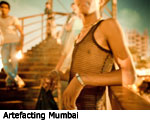 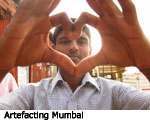 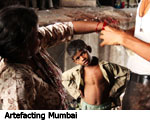
© Artefacting Mumbai U2tour.de: Alright. Then one last question. You are part of a team working on a photography project called Artefacting Mumbai. Can you tell us something more about that? Arne: Sure. You researched well by the way. Artefacting Mumbai is a project that I and two American friends of mine have developed over the last year and a half which was actually also the reason why I did not join the U2 tour to Australia and New Zealand I asked my co-chief to skip that part because I wanted to be in India to do a project that talks about the gaps in society between rich and poor, between Muslims and Christians, between Indians and the East and Western people in the West. So within that project we had a photographer, which was me, we had a videographer, which was a friend from Portland and we had an artist from New York and the three of us used arts basically to break down social barriers. We worked for three months in what is Asiaís largest slum and what we wanted to do is to show a different reality. Most people who think about the slum only think about poverty, crime, unemployed people, misery, disease. And I will not deny that any of them do exist in the slum, but there is also the other side of a very strongly organised social structure of people accepting fate and being happy way more than I in general see in North America or in Europe. We basically wanted to use art as a way to tell that story. U2tour.de: Thank you very much for this interview! Arne: I wish all the German fans all the best and I hope for them that U2 will come back soon. Christoph Beller for U2tour.de |